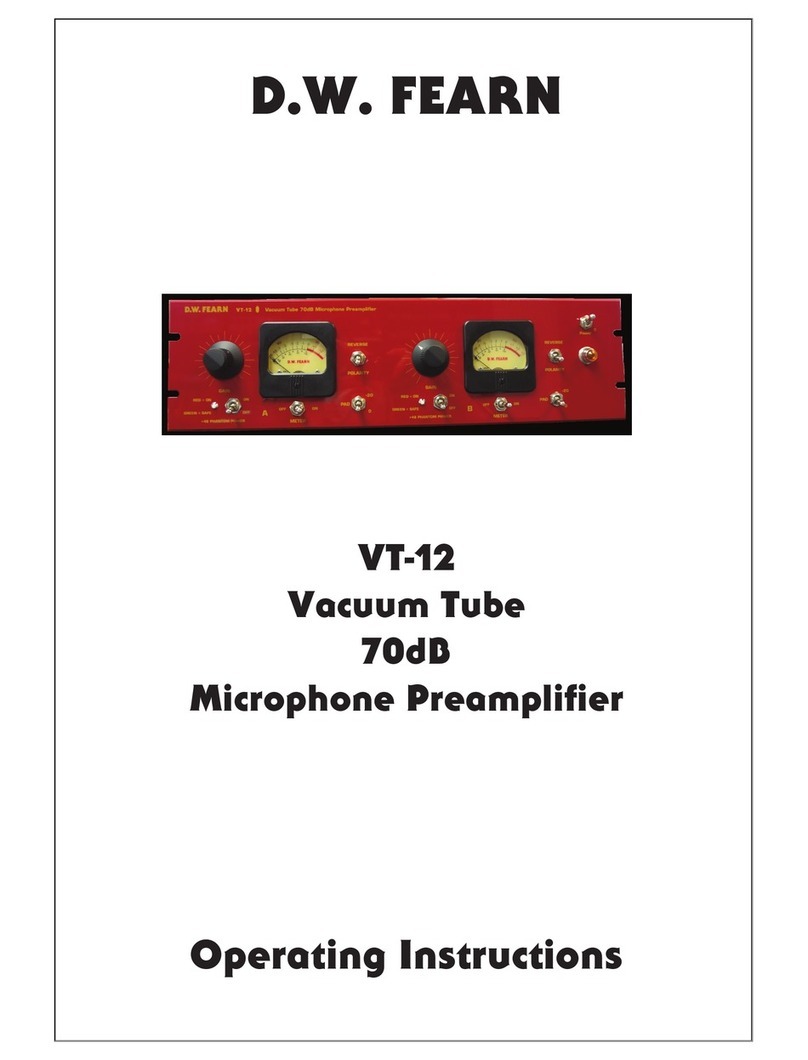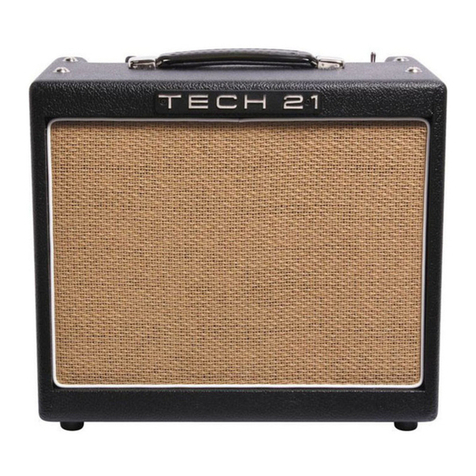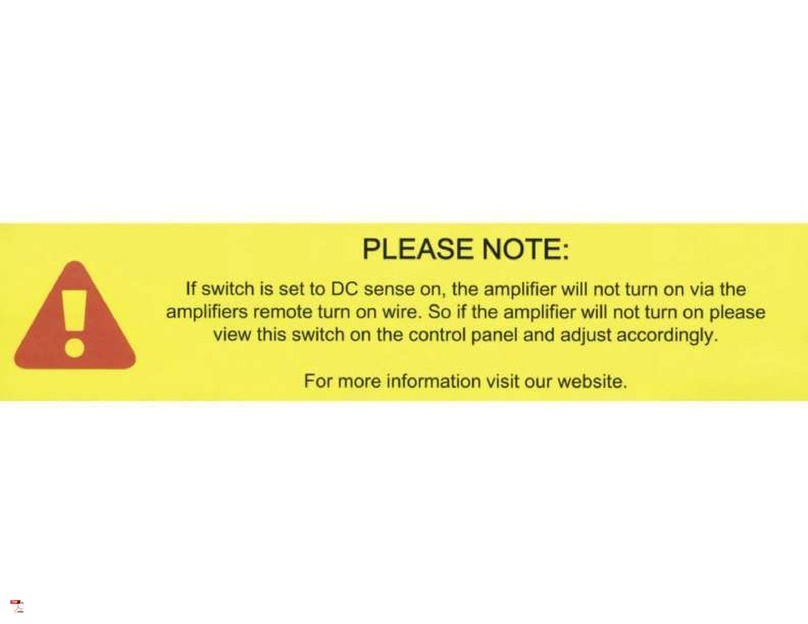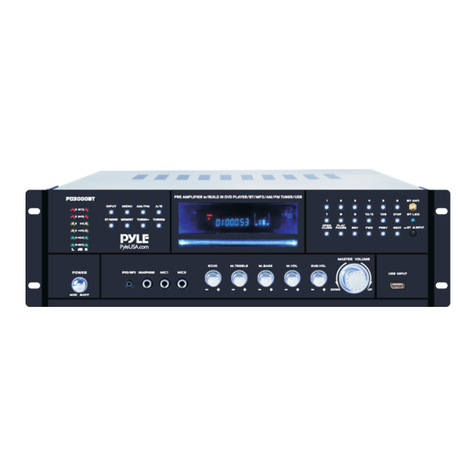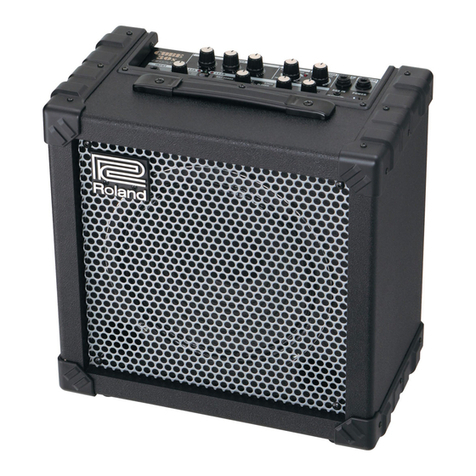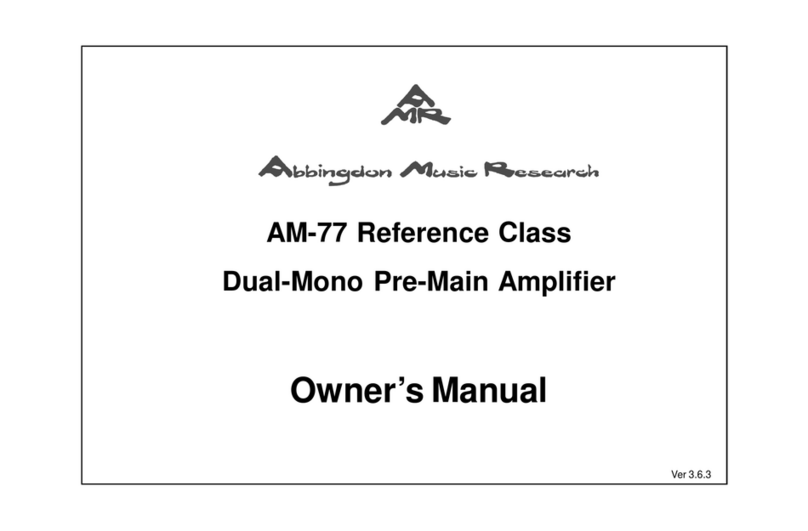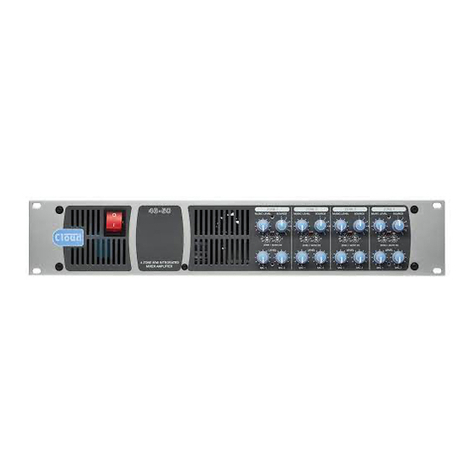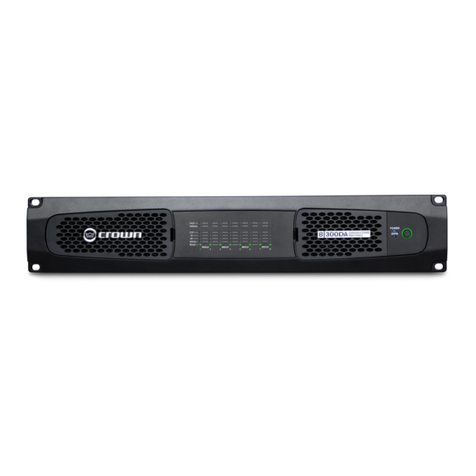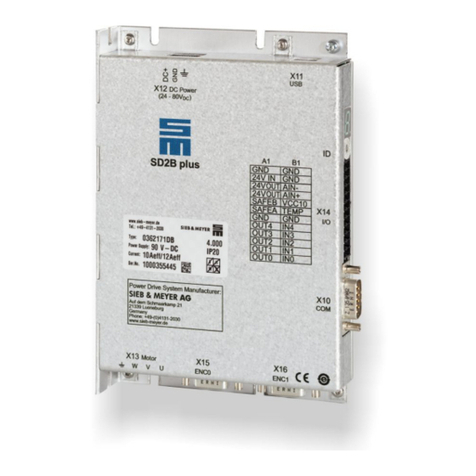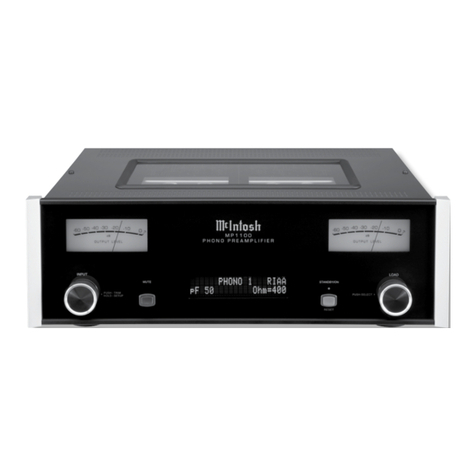Electronics & Innovation 601L User manual

The material contained in this document is the property of Electronics & Innovation Ltd., it is
subject to change without notice.
August 2012 Page 1 of 10 Revision B
601L
Broadband Power Amplifier
HIGH RF VOLTAGES MAY BE PRESENT AT THE OUTPUT OF THIS
UNIT. All operating personnel should use extreme caution in handling these
voltages and be thoroughly familiar with this manual.
Do not attempt to operate this unit prior to reading this manual.

The material contained in this document is the property of Electronics & Innovation Ltd., it is
subject to change without notice.
August 2012 Page 2 of 10 Revision B
Warranty
Electronics & Innovation Ltd., (hereafter E&I) warrants for the period of three
years from the date of original delivery, each unit to be free of defects in
materials and workmanship. For the period of 36 months E&I will, at its option,
repair or replace defective parts so as to render the unit fully operational such
that it performs according to the original specifications; free of charge to the
original purchaser.
Should warranty service be required, the unit must be returned to E&I, freight
cost to be borne by the owner. If, in our opinion, the unit has been damaged by
use outside the limits prescribed in this manual or by accident, then the warranty
shall not be honored. In such a case E&I will provide an estimate for repair,
assuming repair is possible and provide a quote at standard service rates.
Contents
Chapter 1
General Information……………………………………………………………3
Chapter 2
Operation………………………………………………………………………..4
Chapter 3
Technical Information………………………………………………………….7
Chapter 4
Maintenance……………………………………………………………………8
Chapter 5
Safety……………………………………………………………………………12

The material contained in this document is the property of Electronics & Innovation Ltd., it is
subject to change without notice.
August 2012 Page 3 of 10 Revision B
Chapter 1 Introduction
The Model 601L is a general purpose broadband amplifier capable of more than
1W of linear power output when driven by any laboratory signal or sweep
generator from 0.8 to 1000 MHz
An ultra linear Class A design, the 601L will "boost" the output of any signal
source by at least a flat 40 dB (±2.5 dB) and provide its full forward output power
into any load impedance (from an open to a short circuit). Its output is a faithful
reproduction of the input waveform for AM, FM, SSB, CATV, pulse and other
complex modulations. Specified only over the 0.5 to 1000 MHz frequency range,
full power output is typically 2 watts in saturation.
The use of RF bipolar transistors with microstrip circuitry ensures that the 603L is
both a reliable and rugged source of RF power. An integral power supply and
cooling system permit operation over a wide range of temperature and AC line
conditions.
1.2 INSTRUMENTATION IDENTIFICATION
Each amplifier is identified by a serial number tag on the back panel of the unit.
Both the model number and the serial number should be quoted to identify a
specific unit.
1.3 SPECIFICATIONS

The material contained in this document is the property of Electronics & Innovation Ltd., it is
subject to change without notice.
August 2012 Page 4 of 10 Revision B
Physical and electrical specifications are listed in Table 1 below:
Frequency Coverage
0.8 –1000 MHz
Gain
40 dB nominal
Gain Variation
+/- 2.5 dB
Maximum Power Output
1 Watts (min)
Harmonic Distortion
-17 dBc @ 1.0 Watts Pout
Input / Output Impedance
50
Input VSWR
1.5:1 Maximum
Output VSWR
2:1 Maximum
Stability
Unconditionally stable into all passive
loads
Power Requirement
100/240 VAC +/-10% 50–60 Hz, 45 W.
Max
Size and Weight
3.4 x 6.2 x 10.5 inches, 7 lbs
8.8 x 15.7 x 26.6 cm, 3.2 Kg
Operating Temperature
00to 450C.
Protection
Units will withstand 13 dB overdrive
Output Connectors
BNC, Standard, SMA and N-type
optional
Chapter 2 Operation
2.1 INTRODUCTION
The E&I 601L RF amplifier is used to increase the RF output level of signal
sources in the 0.5 to 1000 MHz range. No tuning or any other form of adjustment
is required.
The 601L produces rated power output at its output connector, regardless of load
impedance. Any power reflected due to output load mismatch is absorbed in the
amplifier. Therefore, although the output impedance is 50 (typical RF Output
VSWR: 2:1), the amplifier will work into any load impedance.
2.3 Mains Voltage

The material contained in this document is the property of Electronics & Innovation Ltd., it is
subject to change without notice.
August 2012 Page 5 of 10 Revision B
The supply voltage is automatically selected from 100 TO 240 VAC 47 –63 Hz
2.4 Mains Fuse Rating
The mains fuse Fl is located on the rear panel. The replacement part number
details are:
1.6A Slow Blow E&I Part No: F977-ND. The 1.6A rating is correct for both
115 and 230 VAC
2.5 Mains Lead Connection
The unit comes supplied with a 6 foot mains cord.
2.6 Operation
Proceed as follows:
Ensure input voltage is not excessive
The IV RMS indicated maximum input voltage is 5 times the level of
the input signal required to achieve maximum output. Input voltages
in excess of 2V peak may permanently damage the instrument.
Connect the input signal via a 50 coaxial lead and BNC plug to
the input connector.
Connect the output via a 50 coaxial lead and BNC plug to the
load.
Chapter 3 Technical Information

The material contained in this document is the property of Electronics & Innovation Ltd., it is
subject to change without notice.
August 2012 Page 6 of 10 Revision B
3.1 Performance Checks
To determine the amplifier's performance carry out the following procedure.
3.1.1 Initial Check
The following check can be made whenever the condition of the unit is in
question.
(i) Connect power supply. Switch on power and observe that the switch
illuminates.
(ii) Connect the output of the 601L amplifier to 20 dB attenuator.
(iii) Connect a calorimetric power meter (HP434 or equivalent) to the output of
the attenuator.
(iv) Connect a sweep generator (Wavetek 2001 or similar) capable of
sweeping the frequency range 1 to 300MHz to the input connector, ensure
that the output power of the generator is initially set to minimum.
(v) Adjust the output level of the sweep generator to -10dBm.
(vi) Adjust the input CW signal to any frequency between 0.5 and 1000MHz
for 1W output.
If you can not attain RF power, verify that:
(a) The mains fuse is correctly selected and not blown
(b) The switch is illuminated.
If the mains fuse is not blown but you are still unable to get any RF power, either
return the unit to E&I for repair or proceed to chapter 4.
3.2 Measurement of Gain
Equipment required:
(a) Two power meters; HP 434 or equivalent
(b) Sweep/Signal Generator
(c) 20 dB Coupler
(d) Attenuator, 20 dB

The material contained in this document is the property of Electronics & Innovation Ltd., it is
subject to change without notice.
August 2012 Page 7 of 10 Revision B
Connect the equipment as shown in Figure 2, then proceed as follows:
(a) Increase power from the signal generator to attain an output
power measurement of 1 watt as indicated on the output power
meter.
(b) Measure input power and calculate gain. Gain should be a
nominal 40 dB
(c) Vary the frequency of the sweep generator across the band
from 500 KHz to 1000 MHz. Note that the variation of gain is
within +/- 2.5 dB
3.3 Measurement of Harmonics
Equipment required:
(a) Sweep/Signal generator
(b) Attenuator, 20 dB
(c) Power Meter - HP434A
(d) Spectrum Analyzer
Connect the equipment as shown in Figure 3 then proceed as follows:
(d) Adjust the sweep/Signal generator at a CW center frequency of
0.5 MHz for an indicated output of 1.0W on the power meter.
(e) Using the spectrum analyzer, check that the level of harmonics
are less than -17 dB with respect to the carrier.
(f) Vary the frequency of the generator from 500 KHz to 1000 MHz,
the harmonics should remain at -17dBc or below.
Chapter 4 Maintenance
4.1 Introduction
The E&I 601L RF amplifier requires no periodic maintenance. The instrument is
unconditionally stable and is fail safe under all load conditions. Damages can
only be externally caused by an input signal in excess of the specified IV RMS
maximum.
This chapter therefore, deals only with certain fundamental procedures for fault
location and with the subsequent re-alignment procedures.

The material contained in this document is the property of Electronics & Innovation Ltd., it is
subject to change without notice.
August 2012 Page 8 of 10 Revision B
Performance limits quoted are for guidance only and should not be taken for
guaranteed performance specifications unless they are also quoted in Figure 1.
4.2 Packing for Reshipment
In the event of the equipment being returned for servicing it should be packaged
in the original shipping carton and packing material. If this is not available wrap
the instrument in heavy paper or plastic and place in a rigid outer box of wood,
fiberboard or very strong corrugated cardboard. Use ample soft packing to
prevent movement. Provide additional support for projecting parts to relieve
these of unnecessary shock. Close the carton securely and seal with durable
tape. Mark the shipping container FRAGILE to ensure careful handling.
4.3 Access and Layout
NB: Removal of the cover voids the warranty!
The E&I Model 601L amplifier is housed in an aluminum chassis. A block
diagram schematic is illustrated in figure 4. The cover can be removed by
releasing the 6 M3 screws on the side of the unit.
The rear panel supports the mains fuse holder, AC line cord and the cooling fan.
4.4 Power supply
The power supply is mounted vertically on the left hand side of the amplifier. This
unit has no serviceable parts.
4.5 The Amplifier Module
The power amplifier module is mounted on the Chassis. To remove this module,
the it must be demounted from the chassis. To demount the module de-solder a
wire from the power supply module. Remove the coaxial cables connecting the
RF input and output to the front panel connectors. Remove the three M4 nuts
holding the module to the chassis base and then lift straight up.
Chapter 5 Safety:
Do not attempt to operate this unit with the cover removed. High AC and DC
voltages are present. The cover prevents against electrical shock due to AC line
voltages, high DC and RF fields. Further the cover provides part of the cooling

The material contained in this document is the property of Electronics & Innovation Ltd., it is
subject to change without notice.
August 2012 Page 9 of 10 Revision B
system design. Components, specifically on the RF driver board are prone to
over-heat and eventual failure if the unit is operated without the cover in place.
Ensure that the load is connected to the output prior to connecting the RF input
to the unit. This will prevent high voltages being present and exposed at the
output connector.
Only use the AC cord provided or equivalent.
Ensure that the mains outlet is properly grounded.
Figure 1
Gain Measurement
Figure 2
Power Meter
Sweep Generator
RF Output
500 KHz –1000 MHz
20 dB
Attenuator
Power Meter

The material contained in this document is the property of Electronics & Innovation Ltd., it is
subject to change without notice.
August 2012 Page 10 of 10 Revision B
Harmonic Measurement
Figure 3
Block Diagram
SMPS
RF Power Amplifier
Fan
+ 24 V dc
RF Input
Power Meter
Sweep Generator
RF Output
500 KHz –1000 MHz
20 dB
Attenuator
Spectrum Analyzer
AC Input
RF Output
Table of contents
Other Electronics & Innovation Amplifier manuals
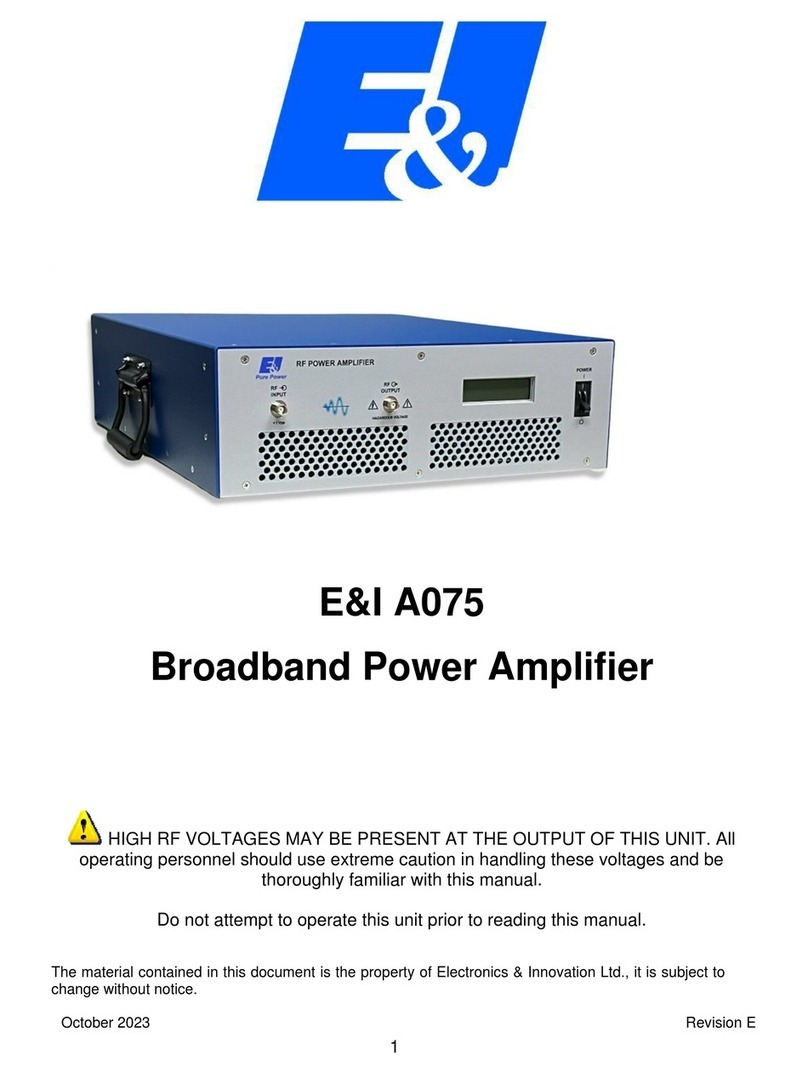
Electronics & Innovation
Electronics & Innovation A075 User manual
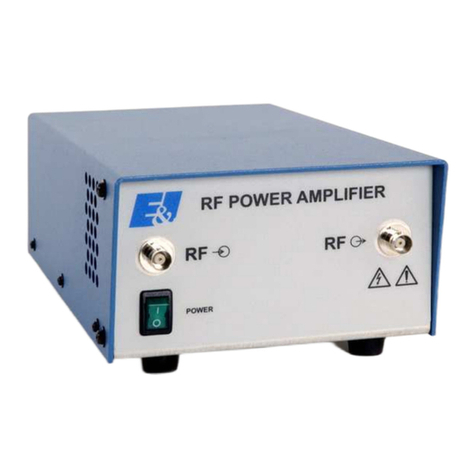
Electronics & Innovation
Electronics & Innovation 403LA User manual
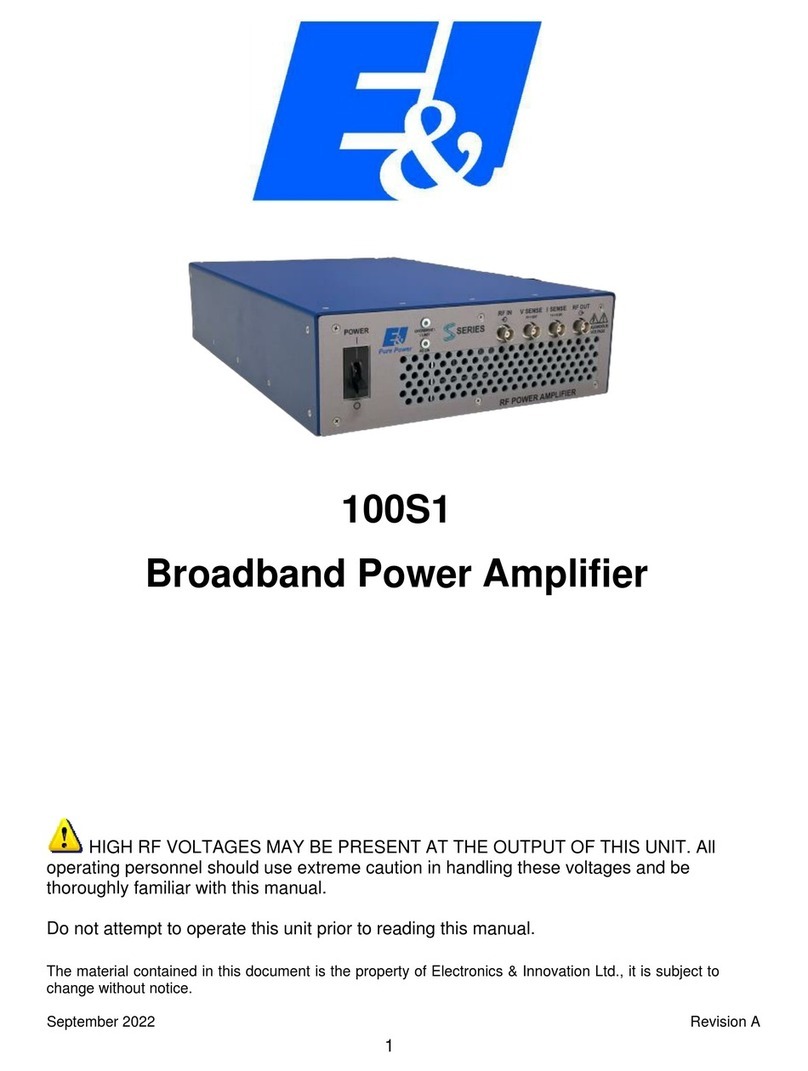
Electronics & Innovation
Electronics & Innovation 100S1 User manual

Electronics & Innovation
Electronics & Innovation 411LA User manual
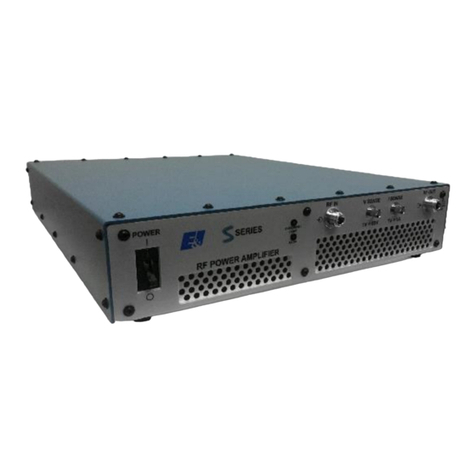
Electronics & Innovation
Electronics & Innovation 500S06 User manual

Electronics & Innovation
Electronics & Innovation 1240L User manual
